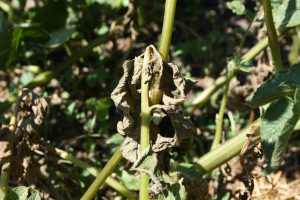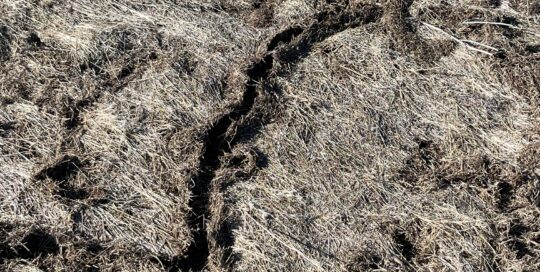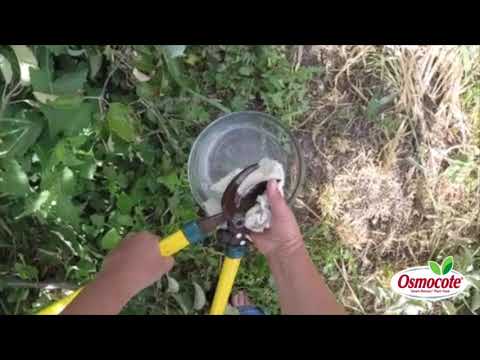Why Potatoes Stop Growing Early
Views: 8836

I was really excited about my potatoes this year, because last year they were a disappointment. And the crazy thing was it wasn’t due to the Colorado potato beetle or some malady, but because the gentleman who owned the community garden took them all.
I went over one day to dig my two rows, and they were gone. Since we eat a lot of potatoes, and I’m kind of a spud snob, I was bummed.
So this year I planted several different kinds in various locations so I would be sure to have plenty for storage. One of my favorites are the fingerling type potatoes. They are fantastic. When you dig them, you can boil them for 5 minutes, then coat them in olive oil, season with a little salt and herbs, and pop them on the grill for 10 minutes. Yum. So I planted a row of French fingerlings, and they grew exceptionally well, until this week.
Early Dying Disease in Potatoes
We had decent moisture this spring, so the plants were probably the biggest potato plants I have ever seen. I was so excited that we’d have a nice harvest of them since my husband and I both love them on the grill.
Then, I noticed the plants looked like they were dying. I immediately started looking for potato beetles. They were clear, but it simply looked like the plants were done growing for the season. After some research I learned they had succumbed to verticillium wilt, also called early dying disease.
It typically starts towards the bottom leaves on the plants and works its way up in an atypical fashion. So there will be one stem here, another on another side. There’s not a distinct pattern of failure. The stems are discolored and even the stem end of the potatoes is pale.
What Causes Verticillium Wilt?
It makes sense that it happened this year since we had cooler, wet weather followed by intense hot and dry conditions. Drought definitely exacerbates the situation. Since the fungus interferes with how the plant utilizes water, it’s kind of the perfect storm for this infection.
The bad news is it’s a soil borne fungus. That means no potatoes, peppers, tomatoes and other members of that family in that garden next year. That’s where I’ll plant the ancient wheat varieties I plan to grow for next year.
But for right now, I will dig the potatoes as we need them for dinner since they’re not going to produce much more with the plants failing. As soon as I have the row cleared of potatoes, I’ll plant a cover crop with buckwheat to help work some more nutrients into the soil before planting wheat either this fall or next spring.
While I’m disappointed that the fingerlings won’t produce as much as I hoped, it’s just like every year where I hold out hope for next year. With the potatoes in a different location, I’m sure they will be incredible and fungus free.
Meet Amy Grisak
Amy is a freelance author and photographer in Great Falls, MT who specializes in gardening, foods, and sustainable agriculture. She provides information on every kind…
Amy's Recent Posts

Avoid These Bad Berries in Your Yard and Garden








